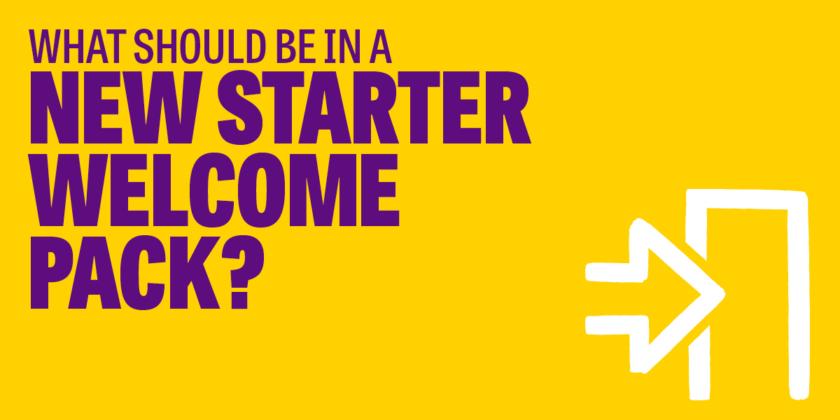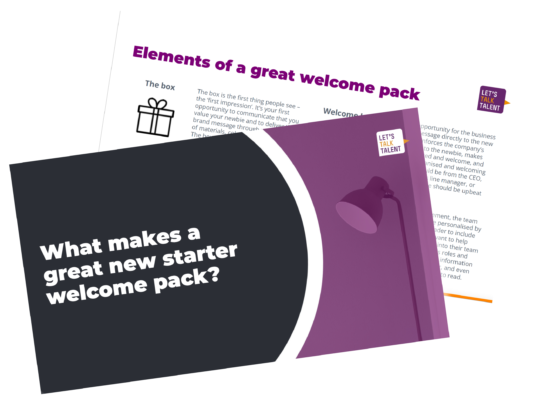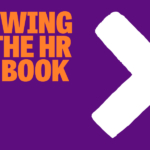Tips to create the best welcome experience for your new joiners
Welcome packs are an essential part of your onboarding process. They set the tone from the very moment someone accepts your offer to join your organisation. They also create both excitement for the future and engagement from the get-go.
Many companies underestimate their impact and settle for boring binders full of forms to fill and compliance information. At Let’s Talk Talent, we think welcome packs should work harder than that! They are, after all, a new joiner’s guide to navigating their new job, their new office, and their new colleagues.
So why not use them to create a positive experience that makes a lasting impression?
Why are welcome packs so important?
An onboarding programme is a crucial employee retention lever. After putting much effort into attracting high potential candidates, many businesses then have the misfortune of seeing them leave within the first few months. In fact, over 20% of staff decide to quit within their first 45 days. Why is that? The promises made in their employee value proposition (EVP) often don’t match the reality of working there. A great onboarding experience can help.
Onboarding should start the moment recruits receive an offer letter, and cover the entire pre- and early life stages of the employee lifecycle. An amazing welcome pack is part of this experience and can go a long way towards making recruits feel as if they made the right decision by joining you.
However, this does not have to mean spending lots of money. At Let’s Talk Talent, experience has taught us that the best onboarding packs are the ones that feel personal and were designed with the recipient in mind.
Over the years, we’ve put together quite a few onboarding kits. Here are our top tips to turn yours into a warm welcome in a box.
Find out more about what an EVP is, why it is important, and how to write a compelling EVP and attract great talent.
The items to include in your welcome pack
“An onboarding pack is a new joiners’ survival guide to their new place of work,” says Jo Taylor, MD at Let’s Talk Talent. It should provide employees with the tools they need to get up and running in their new job as quickly as possible.
Here are a few must-haves:
A welcome letter
This will be an employees’ first introduction to the company. Use it to generate excitement about the future and reinforce that candidates have made the right choice by joining you. Make sure it is personalised and written in a way that represents your internal culture. A handwritten welcome note could also be a great way to make your new starters feel valued and recognised.
A plan for the office
Finding your way to the coffee machine, or the desk of a new colleague you need to collaborate with, can be a bit of a challenge at first. A floor plan is a must. And if your business has adopted a hybrid way of working, make sure you include details of how this works.
Include preferred communications tools, the teams’ onsite schedule and other useful details. Customise this to the new joiner’s journey and highlight the information that will be useful to their particular experience.
A structure chart
Of management and/or the new starter’s team structure. Include photos, bios, and fun facts about each person for an extra personalised touch.
The employee handbook
This is an essential addition to any welcome pack. It provides staff with a clear understanding of the behaviours that are valued within the company, job expectations, and management structures. This will serve as a compass for policies and procedures. It should also introduce new employees to the culture of the organisation and let them know how they will fit in.
HR documents
These are essential, but it doesn’t mean they have to be boring. There are, of course, forms to fill, and information to provide, but try to make this exciting. We’ve seen some great examples of illustrated one-page job descriptions that clearly showcase staff’s main responsibilities, key stakeholders, and performance expectations.
A schedule for new hire orientation activities
Make sure you cover the first two weeks and include who they will be joining, as well as the location of each activity. Find ways to make remote activities or mandatory training more interactive, and provide technical support for online collaborative tools.
Some company swag
Branded merchandise may seem like a nice-to-have, but it does create a strong sense of belonging for newcomers. Mugs, stickers, USB drives are great, but don’t limit yourself. Bring fun into the process in order to generate energy and motivation.
A few nice-to-haves to add to your welcome box
An actual box!
Many organisations stick with the boring binder. But there is something to be said about the excitement of opening an actual box. Find a supplier who can design customised packaging in your brand colours.
A notebook
These are always useful, as there are plenty of notes to take during the first few weeks. We’ve seen some great examples of companies personalising the cover so that any notebook left behind could be returned to their rightful owner.
A mug
A mug may seem like an old party trick, but they are a great way to make people feel welcome. Caffeine addiction is something most of us share, and waiting for the kettle to boil is a good opportunity to chat with new colleagues. Add the name of your new employees on your mugs, or a design that represents them. An oldie but goodie: write how they take their tea or coffee, making it easier for other staff to offer them a hot beverage and strike up a conversation.
Something original
T-shirts, gym swag, custom socks… Whatever works to make your staff feel part of the group! There are so many examples of this. The key point to remember is that it should be fun, and represent your brand. A financial client of ours added piggy banks to their welcome box. Which is relevant in terms of the industry they worked in, but also the current cost of living context.
Items that promote employees’ wellbeing
Employee wellbeing is a key trend for 2023 and employers should actively help promote it. Add calming teas, adult colouring books, fuzzy socks, or even blue-light glasses that negate the impacts of prolonged screen exposure to your kit. We’ve heard of a company offering fitness trackers to employees, and setting up monthly challenges for everyone to join.
Something celebratory
Joining a new job is an exciting milestone, so add something celebratory to your pack. A coupon or gift certificate could be a great addition.
A few considerations when designing your welcome pack
The onboarding welcome pack serves a very specific purpose: to make employees feel welcome, and to create a sense of belonging.
When designing your pack, ask yourself:
- What do we want the first impression of the company to be?
- What does our new starter need to know?
- What are our values as a brand and how can we communicate that through this package?
- Are there any elements we use on a daily basis that we can use?
Also, a few things to remember.
Beware of alcohol or snacks, as you should always check food and drink preferences or restrictions before gifting those. Also, don’t assume the pack did the job and employees have everything they need. Take the time to check in with them and see if there is anything else they require.
Follow these simple tips and you are sure to leave them feeling like the best is yet to come!
We share some great examples of kickass welcome packs in our free Welcome Pack Guide. If you would like an audit of your existing onboarding process, do not hesitate to book a call with us. Otherwise, check out our onboarding services page for lots of free resources, including our downloadable onboarding checklist.




